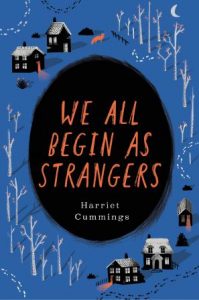Eight Tips for Seeing Your Novel with “Fresh Eyes”
 Reaching the end of a draft always feels like cause for celebration. A trip away or simply a punch in the air Breakfast Club style…however we get our kicks, we need to make the most of them. Because soon enough it’ll be time for the next draft and that can be a tough nut to crack.
Reaching the end of a draft always feels like cause for celebration. A trip away or simply a punch in the air Breakfast Club style…however we get our kicks, we need to make the most of them. Because soon enough it’ll be time for the next draft and that can be a tough nut to crack.
For me, one of the hardest things about returning to a novel is seeing the story for what it really is. Not what I’ve imagined or the glorious idea I told my friends about – the actual words on my laptop. Here are some strategies I’ve cobbled together for seeing work with fresh eyes.
1. Spend time away
In a perfect world this would be a couple of months or more. If a deadline is speeding into view, it could just be a weekend. I usually put a specific end-date in my diary, otherwise I’m tempted to cut the period short. And if I think of something during these weeks, I’ll write myself a note in a separate document or notebook. Peeking at the story would defeat the point.
As for how to distract myself, I like working on a different project during this time. It’s not necessarily writing or anything creative, just something that absorbs me so I’m not simply waiting around.
2. Print it out
Holding a physical copy in your hands makes it feel more real and perhaps more important too. Even the act of pressing ‘print’ can feel momentous in its own small way. I print on both sides of the paper, double-spaced to allow room for adding notes.
3. Put it on a Kindle
If you’re wanting to focus on the overarching story and other major aspects, rather than line-by-line edits, this might work better than printing out your novel. Since you’re not able to add notes (or at least not as easily), you’re forced to focus on the bigger things. You can always keep a notebook by your side for any thoughts or questions that occur while reading and I suggest you force yourself to read all the way through before making any changes.
(If you use Scrivener, save the text as the Kindle ebook file type .mobi)
4. Listen to your novel
This can be painful – partly because the voices sound overly mechanical, partly because you’re forced to sit for hours listening (there’s no skipping ahead or skim-reading). But using software such as NaturalReader can be another way to experience your writing more objectively.
I find it’s nice to rest my eyes from a computer screen too. While listening to my work, I ask myself questions such as: Which are the parts where my concentration wavers? Where does the pace dip? Does the dialogue sound clunky at all?
5. Imagine reading to a room full of people
While studying with Faber Academy I had to read work in front of the group. The experience made me squirm but usually in a good way. Doing this drew my attention to any long descriptive passages that did nothing for the story. Likewise, any sentences that contained showy words for the sake of sounding clever. The red pen quickly came out to do its worst!
Like Stephen King says, ‘Write with the door closed, edit with the door open.’
 6. Imagine the fussy reader
6. Imagine the fussy reader
That person in your book club who always complains about something that no one else noticed? Your most pedantic friend who sends back food in restaurants? It can be good to imagine what faults people might potentially find in your work, e.g. a chapter is too slow or a twist isn’t believable. Often this is a surprisingly easy task – we tend to know what’s wrong with our work and just need to admit it.
Of course we don’t need to please that (imaginary) person. It might be that we choose to ignore the criticism. But the point is we’ve at least considered this and made a conscious decision either way.
Zadie Smith, ‘try to read your own work as a stranger would read it, or even better, as an enemy would.’
7. Break it up into parts
It can be easy to justify a boring chapter by telling ourselves it’s leading up to the next, more exciting one. It’s necessary information. It needs to be there, right? The trouble is, readers don’t know that. They want to be engrossed in every single paragraph, let alone every chapter.
In questioning my work’s appeal, I find it useful to break the text into sections. This way I can focus on what’s right or wrong with every part. Often my chapters can be missing enough of an emotional pull – I’ve included too much information or backstory that weighs down the text. Of course this will be different for everyone. Zoom in to inspect the nitty gritty of your story.
8. Go somewhere different
As daft as it sounds, I find leaving my study (where I usually write) helps me to pretend the novel is someone else’s work. The new place could be a cafe, train or anywhere I might enjoy reading a book. It’s the jolt from routine that allows for a different mindset.
I hope you found these tips helpful. Do you have any others that I’ve missed? I’d love to hear them in the comments section below!
—
Harriet Cummings is a freelance writer whose debut novel We All Begin As Strangers will be published by Orion in April this year. Inspired by a true story, it’s a dark drama that explores the lives and secrets of a small English village. When not writing, Harriet spends time with her husband and springer spaniel, often found on muddy walks around their home of Leamington Spa, UK.
Find out more about her on her website https://harrietcummingsauthor.com/
Category: How To and Tips


























Thanks – some great tips. Another I find helpful is to change the font before editing – making your text look physically different also helps.
Oh yes, I hadn’t thought of that. I imagine it helps to fool yourself into thinking you’re reading someone else’s work. Great idea.
Just what I need as I approach the mammoth task of rewriting my novel!
Ah, good to hear! Good luck with the rewriting, Renee.
Great suggestions. Each one resonates me as I approach my final draft.
I know this one: “one of the hardest things about returning to a novel is seeing the story for what it really is. Not what I’ve imagined.”
I’m glad they proved useful, Natalia. Good luck with your final draft!